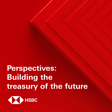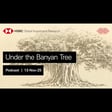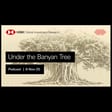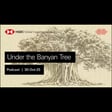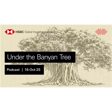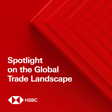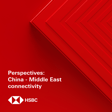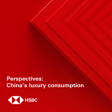Become a Creator today!Start creating today - Share your story with the world!
Start for free
00:00:00
00:00:01

Under the Banyan Tree - Exploring the Asia-Middle East corridor
Fred Neumann is joined by fellow economists Justin Feng in Hong Kong and Simon Williams in Dubai to discuss Asia’s deepening economic ties with the Middle East. Disclaimer: https://www.research.hsbc.com/R/101/bPMnw9s. Stay connected and access free to view reports and videos from HSBC Global Research follow us on LinkedIn https://www.linkedin.com/feed/hashtag/hsbcresearch/ or click here: https://www.gbm.hsbc.com/insights/global-research.
Hosted on Acast. See acast.com/privacy for more information.
Transcript
Introduction to HSBC Global Viewpoint
00:00:02
Speaker
Welcome to HSBC Global Viewpoint, the podcast series that brings together business leaders and industry experts to explore the latest global insights, trends, and opportunities.
00:00:13
Speaker
Make sure you're subscribed to stay up to date with new episodes.
00:00:16
Speaker
Thanks for listening.
00:00:17
Speaker
And now onto today's show.
Asia and Middle East Trade Overview
00:00:34
Speaker
Hello and welcome to Under the Banyan Tree.
00:00:35
Speaker
I'm your host Fred Newman, Chief Asia Economist here at HSBC.
00:00:39
Speaker
Now we've got a great discussion lined up for you today.
00:00:42
Speaker
In a world where protectionism is on the rise, we're looking at a blossoming trade relationship with solid gains on both sides.
00:00:49
Speaker
Economic links between Asia and the Middle East are set to soar in the coming years.
00:00:54
Speaker
I've got guests from both regions with me today.
00:00:57
Speaker
Asia economist Justin Feng is here in the studio in Hong Kong and chief senior economist Simon Williams joins us from Dubai.
00:01:05
Speaker
Let's get the conversation underway.
00:01:07
Speaker
You're listening to Under the Banyan Tree, where we put Asian markets and economics in context.
Middle East Economic Diversification
00:01:15
Speaker
So, Simon, let me start with you.
00:01:17
Speaker
You're based in Dubai.
00:01:19
Speaker
Give us a sense of what's cooking in the Middle East right now.
00:01:22
Speaker
We tend to think of the Middle East being a major oil exporter, but a lot more is happening there at the moment.
00:01:29
Speaker
It's really a region that's kind of starting to wake up in economic terms into diversification.
00:01:36
Speaker
Give us a lay of the land of what's going on in the Middle East.
00:01:39
Speaker
There's a lot going on.
00:01:40
Speaker
Some of it's cyclical.
00:01:41
Speaker
So the cyclical growth story has been really strong, really, since COVID.
00:01:47
Speaker
The high frequency data is good.
00:01:49
Speaker
Sentiment here is really good.
00:01:51
Speaker
A look at the growth drivers and they're broad and they've got momentum.
00:01:54
Speaker
Consumption is running strong.
00:01:56
Speaker
We've got young population.
00:01:57
Speaker
Employment is...
00:01:59
Speaker
is rising.
00:01:59
Speaker
They're consuming huge investment programs underway across the Middle East as well.
00:02:05
Speaker
Saudi tends to get the headlines with its giga projects, so they are huge.
00:02:09
Speaker
There's big capital plans elsewhere too, and big gains in external demand, not so much for goods, but certainly for services, travel and tourism.
00:02:18
Speaker
in particular, is driving the economy on very, very strongly.
00:02:21
Speaker
No inflation, strong public finances, strong currency.
00:02:25
Speaker
Cyclically, in that sense, it's working well.
00:02:27
Speaker
But these big structural changes that I think have really marked this phase of the story out against other emerging markets and developed markets.
00:02:37
Speaker
So you paint a picture of a very dynamic region that's diversifying.
00:02:41
Speaker
I think diversification is really one of the key words when it comes to Middle Eastern
Beyond Energy: Asia-Middle East Trade Diversification
00:02:45
Speaker
economies.
00:02:45
Speaker
Now, Justin, let me bring you in here.
00:02:48
Speaker
You've looked at a lot of trade between Asia and the Middle East, and
00:02:52
Speaker
Of course, Asia buys a lot of energy from the Middle East.
00:02:56
Speaker
But do you see signs of other types of goods trade now starting to emerge, maybe tapping into what Simon was mentioning, broader consumer market, for example, in the Middle
00:03:08
Speaker
Right, I think you both hit on the head with diversification.
00:03:11
Speaker
Asia-Middle East trade relationship has traditionally been dominated by energy, but if we look at Middle East exports today to Asia, we see a lot more chemicals, plastics, rubber, precious metals that are being re-exported from the UAE to high-income consumers in China and India, for example.
00:03:31
Speaker
And also fertilizers, that's maybe something unexpected.
00:03:35
Speaker
A lot of Middle East fertilizer exports are now going to Southeast Asia for agriculture.
00:03:40
Speaker
So we already see that diversification away from oil and gas, in particular energy, to other areas.
00:03:48
Speaker
Simon, you mentioned the amazing demographics in the Middle East.
00:03:52
Speaker
That implies growing consumer markets.
00:03:56
Speaker
Do you see evidence of that kind of drawing in foreign investment as foreign, maybe Asian investors are trying to set up shop in the Middle East, trying to sell into this broader middle class?
Demographics and Investment in the Middle East
00:04:07
Speaker
That is, is there a consumer market developing that is attractive for companies from Asia?
00:04:11
Speaker
Yeah, I mean, the populations are young and they are growing, growing quickly.
00:04:15
Speaker
Household formation in particular is picking up pretty rapidly.
00:04:19
Speaker
And I put the demographics for the Middle East against most other parts of the emerging and developed world.
00:04:25
Speaker
Yeah, the populations are huge, but my goodness, they are young and they continue to expand.
00:04:30
Speaker
quickly.
00:04:31
Speaker
See what I've seen in that trade relationship that Justin's describing.
00:04:34
Speaker
I think it's a natural symbiotic relationship, which is at the heart of it, between the world's biggest energy exporters and the fastest growing consumers.
00:04:43
Speaker
But like Justin, I look through the data and what I can see is trade not just growing in scale, but growing in sophistication.
00:04:51
Speaker
as well as the needs of the Middle East going to continue to move up the value chain as the economies diversify, but also as Asia's productive capacity expands and evolves
Rise of Bilateral Investments
00:05:04
Speaker
as well.
00:05:04
Speaker
I think it's that that we're seeing in this particular phase of that expanding and increasingly sophisticated trade relationship.
00:05:14
Speaker
So that's, of course, trade is one area, but then there's, of course, also investment.
00:05:18
Speaker
Justin, how much bilateral investment is really happening between the Middle East and Asia?
00:05:24
Speaker
They're both very capital-rich areas.
00:05:27
Speaker
Have you seen an increase in investment flows between the two regions?
00:05:33
Speaker
Yeah, definitely.
00:05:34
Speaker
We expect about $12 billion of investment increase between now and about 2035.
00:05:40
Speaker
Right now, investment is mostly concentrated within the Middle East countries.
00:05:47
Speaker
So generally, Asian countries such as Japan, China, they're typically the net outbound FDI countries, whereas the Middle East is typically receiving FDI.
00:05:59
Speaker
But we've also seen a lot of interest in a new emerging area such as Southeast Asia.
00:06:05
Speaker
A lot of sovereign wealth funds from the Gulf, for example, have this capital account surplus and are now recycling that towards outbound FDI and portfolio investments and really increasing their exposure to Asia.
00:06:20
Speaker
Now, there's a paradox here, isn't there, Simon?
00:06:23
Speaker
We have a capital-rich region in the Middle East.
00:06:25
Speaker
We have a capital-rich region also in most of Asia, not everywhere.
00:06:30
Speaker
But you talked about these big investment plants are now being rolled out in the Middle East, very ambitious investment plants.
00:06:36
Speaker
As a capital-rich region, why would the Middle East want to attract Asian investment into this?
00:06:42
Speaker
They have the capital.
00:06:44
Speaker
What are they looking for from Asia?
00:06:45
Speaker
Is it the know-how?
00:06:46
Speaker
Is it funding?
00:06:49
Speaker
What's the complementarity here when it comes to the investment?
Non-Oil Economy Growth and Asian Expertise
00:06:52
Speaker
How does it align with some of these big, ambitious investment projects that you see develop in the Middle East?
00:06:58
Speaker
I think it's a two-way relationship.
00:07:01
Speaker
And some of what the Middle East is looking for is about funding.
00:07:04
Speaker
I mean, Saudi's giga projects alone are worth nearly $900 billion.
00:07:08
Speaker
And if you're trying to fund projects of that kind of scale, you're looking to diversify your funding base.
00:07:14
Speaker
But what the Middle East really wants alongside its capital is expertise.
00:07:19
Speaker
And particularly it wants access to tech that will allow it to grow a non-oil economy
00:07:26
Speaker
manufacturing industrial base and services base that can be globally competitive so you're absolutely right some of it's about funding but really what it's about is is know-how in terms of the export of capital well you know the gulf is running current account surplus that needs to find a home but there's also you know 3.5 4 trillion dollars worth of sovereign wealth already owned by those sovereign wealth funds and that is looking to
00:07:53
Speaker
reallocate to areas of the world where the potential gains are greater and where potential long-term growth is greater.
00:08:01
Speaker
I think that inevitably means a reorientation from west to east.
00:08:07
Speaker
And it's clear from the statements, the operations, the organizational shift for some of the regional sovereign wealth funds that Asia is absolutely the top of the list.
00:08:17
Speaker
So we have two regions then kind of moving capital, East and West.
00:08:21
Speaker
There's some common territory there.
00:08:22
Speaker
Simon, let me follow up quickly on this.
Geopolitical Shifts and Bilateral Trade
00:08:25
Speaker
You've done quite an extensive travel in Asia over the past year, you know, from your base in the Middle East now.
00:08:33
Speaker
And you've talked to companies, you've talked to officials in India, in China, in Korea.
00:08:39
Speaker
About investing in the Middle East, what's sort of the main interest that you sense?
00:08:45
Speaker
What is the main selling point from your side and what are sort of the questions you receive from them?
00:08:50
Speaker
And obviously it varies depending which market I'm in.
00:08:54
Speaker
But clearly the basis is it is in trade.
00:08:57
Speaker
And I think energy and energy security is a part of that.
00:09:00
Speaker
But a recognition of the mutual benefits that can come from expanding trade ties.
00:09:07
Speaker
The investment ties, absolutely a desire to be profitable.
00:09:12
Speaker
exposed to market opportunities in other parts of the world.
00:09:17
Speaker
I think there is strong government to government support for a deepening of those capital ties.
00:09:22
Speaker
And I think that's in part about shifts in broader global geopolitics that's been expressed in the changes in those bilateral ties.
00:09:31
Speaker
I've just come back from India.
00:09:34
Speaker
And, you know, the very close cultural and political connections have always been between India and the Middle East, particularly between India and the and the UAE.
00:09:42
Speaker
I think that's the foundation, the basis for strengthening trade ties in goods and increasingly in services and capital flows as well.
00:09:51
Speaker
I think you've got a lot, a lot further to come.
00:09:53
Speaker
In fact, that reminds me, we just had a Saudi delegation in Hong Kong here, and they're really looking to list potentially companies on the Hong Kong Stock Exchange.
00:10:03
Speaker
So it's not just about sovereign wealth funds moving into capital into Asia, but also deepening, I guess, the financial market relationship between the two regions.
Asia-Middle East Trade Challenges
00:10:16
Speaker
Now, all of that sounds fantastic.
00:10:17
Speaker
We've talked about goods integration opportunities, investment opportunities.
00:10:21
Speaker
But, Justin, what are some of these obstacles in real terms, in terms of that integration?
00:10:26
Speaker
Yes, a lot of potential, but a lot of challenges as well.
00:10:30
Speaker
I think in the short term, we should pay attention to the Red Sea shipping disruptions that are still ongoing right now.
00:10:35
Speaker
Now, I think most of this is primarily affecting Asia's trade with Europe and North America, and not so much necessarily Asia's trade with the Middle East.
00:10:44
Speaker
Obviously, Asia and the Middle East lie a little bit closer in terms of their proximity.
00:10:49
Speaker
And there's also the availability of land routes, especially from mainland China to the Middle East.
00:10:54
Speaker
And of course, that's very important because mainland China is the primary manufactured goods producer that
00:11:00
Speaker
the Middle East new emerging middle class is rapidly consuming from.
00:11:04
Speaker
So I think this Red Sea shipping disruption is a shorter term risk that is manageable with the right supply chain oversight.
00:11:12
Speaker
But I think in terms of a longer term perspective, the bigger risk is really a stagnation in terms of trade liberalization.
00:11:20
Speaker
So Asia and the Middle East are two regions where the average tariff rate is still substantially higher than advanced economies, say, for example, the European Union and other advanced economies.
00:11:31
Speaker
So I think if we see more free trade agreements that can be concluded, that could really go a long way towards mitigating that longer term trade barrier risk.
00:11:40
Speaker
So you talked to some of these obstacles and of course there are initiatives to kind of facilitate trade, facilitate investment.
UAE Trade Agreements with Asia
00:11:50
Speaker
Simon, you sit in Dubai.
00:11:53
Speaker
Have you seen a stepped up commitment by local officials to try to maybe sign free trade agreements, to have bilateral investment treaties, for example, with Asia?
00:12:05
Speaker
Which of the economies in the Middle East do you think are at the forefront of moving in that particular direction in order to facilitate trade and bilateral or multilateral investment between the two regions?
00:12:17
Speaker
No, I think that's definitely happening at some places.
00:12:21
Speaker
It's particularly clear in the UAE and Saudi Arabia to an extent as well.
00:12:25
Speaker
But the UAE is aggressively pursuing comprehensive economic partnership agreements with Asia and more broadly.
00:12:33
Speaker
I mean, the deal signed with India, what, two years ago, and that was concluded in under 90 days, a comprehensive economic partnership agreement concluded in just three months.
00:12:44
Speaker
And I think that speaks to the appetite
00:12:46
Speaker
on both sides for closer ties, but also just how complementary those two economies are.
00:12:53
Speaker
It makes sense to both parties that they work together.
00:12:56
Speaker
The advantages are clear.
00:12:59
Speaker
And that agreement is now
00:13:00
Speaker
now in place and is already yielding returns.
00:13:03
Speaker
Well, it's refreshing to hear that you can sign international agreements within three months of negotiation because in other parts of the world it certainly takes much longer than that.
00:13:11
Speaker
But maybe it's a great opportunity to take a quick break.
00:13:13
Speaker
And when we're back, we want to talk about some of the people exchanges as well, because, of course, they are part and parcel of that increased integration story between Asia and the Middle East.
Labor Exchanges and Economic Ties
00:13:34
Speaker
So coming back, we already talked a lot about goods integration, investment integration, for example, but of course, there's also people exchanges.
00:13:43
Speaker
Simon, one thing, despite the demographics in the Middle East that you've always highlighted, our sort of dream demographics in terms of young populations expanding very rapidly,
00:13:52
Speaker
Isn't there also ultimately a labor shortage, a human capital shortage in some parts of the Gulf, for example?
00:13:59
Speaker
And to what extent is that need then be filled by Asian workers, for example, immigrating?
00:14:05
Speaker
Have you seen a step up in this or is there a tendency towards kind of localizing some of that labor?
00:14:13
Speaker
I think, again, that varies economy by economy.
00:14:15
Speaker
But, yeah, with the openness to expatriate, Labour has always been.
00:14:20
Speaker
I think one of the changes we've had, particularly in the last two or three years, especially since COVID, has been a shift, a focus on trying to make that expatriate population more permanent.
00:14:31
Speaker
So the introduction of golden visas, for example, in the UAE, which do away with
00:14:37
Speaker
Now, the old sponsorship systems of the former regime and effectively give people permanent residency in countries that changes the position of expatriate workers in this economy.
00:14:51
Speaker
But Asian workers are key to this.
00:14:55
Speaker
But Gulf workforce, the data isn't great.
00:15:00
Speaker
But we think about a third of the population of the of the UAE is South Asian, is Indian.
00:15:05
Speaker
And there's a very big Chinese population here as well on the population, which is growing fast.
00:15:10
Speaker
So, Justin, since I already mentioned India, mentioned either Southeast or South Asia, what are some of the key countries that actually benefit from that people-to-people exchange?
00:15:19
Speaker
Because we talk a lot about China's investment in the Middle East.
00:15:23
Speaker
We talk about maybe Korean construction companies being the Middle East.
00:15:27
Speaker
But then there's also other economies in Asia that actually benefit from that increasing linkage.
00:15:32
Speaker
What are some of those economies in Asia?
00:15:33
Speaker
Yeah, absolutely.
00:15:34
Speaker
Simon was talking about kind of from the Middle East perspective, how they benefit from the human capital that they get from, say, for example, the Indian nationals living in the UAE.
00:15:43
Speaker
But from the perspective of Asian economies, you have a lot of developing economies such as Bangladesh, Sri Lanka, the Philippines, and Pakistan that reap enormous remittance flows from their overseas worker population.
00:15:56
Speaker
that work in mostly Gulf economies as domestic helpers, construction workers, people in retail, and this forms quite a substantial amount of their GDP.
00:16:08
Speaker
So we had goods integration, investment integration, and now, of course, people as well.
00:16:12
Speaker
And we should probably add also not just workers, but also tourism going in each direction, cementing that relationship as well.
00:16:21
Speaker
This is very exciting.
00:16:23
Speaker
I think we talk, when we look at a global economy, there's always, we talk about
00:16:27
Speaker
protectionism bubbling up and trade restrictions.
00:16:30
Speaker
But I think here is an example of two very large regions coming together more closely and actually moving into more of an integrative state than we see
Economic Integration Amid Protectionism
00:16:40
Speaker
elsewhere.
00:16:40
Speaker
But I wanted to ask you lastly, when you did this research, Justin, what surprised you the most when you looked at Asia Middle East corridor?
00:16:50
Speaker
What sort of stuck out to you in terms of the most surprising finding that you didn't expect when you started out with this project?
00:16:56
Speaker
I think you alluded to it earlier.
00:16:58
Speaker
It's this excitement around greater economic integration amid this global environment we're in where a lot of countries are leaning more towards protectionism.
00:17:09
Speaker
We see more national security related trade barriers, investment barriers, for example.
00:17:14
Speaker
But here you really have, as Simon said, two complementary regions that have all of the economic incentives to deepen their trade, investment, and people-to-people exchanges.
00:17:25
Speaker
And Simon, you on your travels through Asia and the Middle East, what is sort of one thing that strikes you the most in terms of the potential for Asia, Middle Eastern cooperation integration?
Future of Asia-Middle East Trade
00:17:38
Speaker
Any examples of companies or any sectors that you think sort of are overlooked sometimes when it comes to this integration story?
00:17:47
Speaker
I guess I've got India fresh in my mind because I've just returned.
00:17:50
Speaker
But I think it was talking to some of the tech guys down in Bangalore, the kind of project, the work that they're doing, where they're already engaged in the Middle East, where it's just so clear to me that the demand for what they produce is going to rise across this part of the world.
00:18:10
Speaker
I guess the other thing that surprised me, pulling this report together, was, I guess, just totting up
00:18:15
Speaker
Some of the numbers are realising the scale that we're already at.
00:18:18
Speaker
I mean, $950 billion worth of bilateral trade between Asia and the Middle East already.
00:18:24
Speaker
You look at how fast these two parts of the world are growing, that natural.
00:18:29
Speaker
The complementarity, the potential for more than the idea, the $1.5 trillion, $2 trillion, the foreseeable future.
00:18:37
Speaker
That's the kind of numbers that we're working with.
00:18:39
Speaker
And those are impressive numbers indeed.
Podcast Conclusion and Subscription Invite
00:18:42
Speaker
I want to thank you both for coming under the banyan tree to discuss Asia, the Asia-Middle East corridor.
00:18:48
Speaker
And I'm sure we'll be back checking in on the state of Asia-Middle East economic relations in due course.
00:18:55
Speaker
So thank you very much.
00:18:56
Speaker
Thanks, Fred.
00:18:56
Speaker
Thanks, Fred.
00:19:00
Speaker
And that's a wrap for another week here, folks.
00:19:02
Speaker
Great to have you with us as always.
00:19:03
Speaker
And remember to listen, like and subscribe to Under the Banyan Tree and our sister podcast, The Macro Brief, wherever you get your podcasts.
00:19:10
Speaker
We'll see you next time.
00:19:38
Speaker
Thank you for joining us at HSBC Global Viewpoint.
00:19:41
Speaker
We hope you enjoyed the discussion.
00:19:44
Speaker
Make sure you're subscribed to stay up to date with new episodes.
